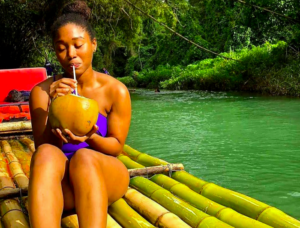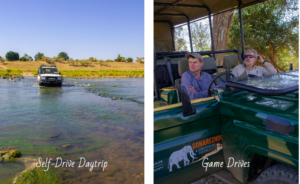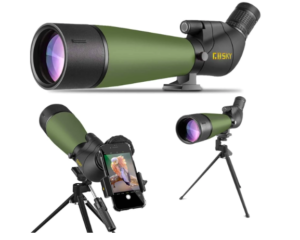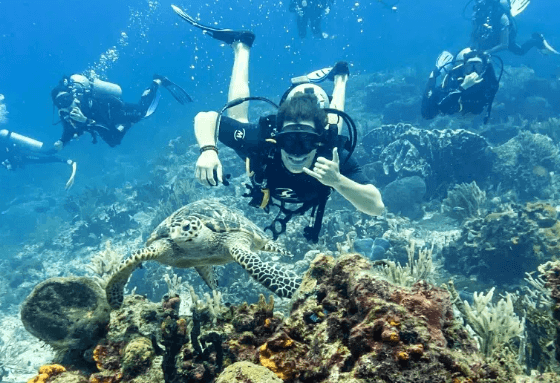
Best States for Scuba Diving- Exploring the Depths.
Under the sparkling waves of the United States’ coastline waterways is a world of wonder and mystery that calls to the daring. Scuba divers may explore a world of marine life, sunken wrecks, and colourful underwater ecosystems from the mesmerising coral reefs of Florida to the kelp forests of California’s Pacific coast. The United States has a wide variety of scuba diving spots, each with its own set of underwater riches just waiting to be explored. Join us as we explore the thrilling world of best scuba diving in the United States, where each dive promises to expose the awe-inspiring beauty and mystery of the underwater universe.
What Are The Best States for Scuba Diving?
1- Florida Scuba Diving:

Few destinations in the United States can compete with Florida’s colourful underwater world for scuba diving. With its warm seas, abundant marine life, and an abundance of dive sites ranging from coral reefs to sunken shipwrecks, Florida is a diving enthusiast’s dream. Whether you’re an experienced diver or just starting out, Florida’s coastal waters provide a thrilling playground for exploration and discovery.
Key Dive Locations:
The Florida Keys are a renowned scuba diving destination, with the world’s third-largest barrier reef system. Colourful coral structures abound at Key Largo’s John Pennekamp Coral Reef State Park, while the Spiegel Grove wreck near Key West draws divers with its commanding presence.
Blue Heron Bridge:
This unusual spot, located near Riviera Beach, provides beach diving and is famous for its macro marine life, making it a favourite among underwater photographers.
The Devil’s Den:
Devil’s Den is an ancient spring within a cavern in Williston where divers may explore underwater rock formations and enjoy year-round stable temps.
Ginnie’s Springs:
Ginnie Springs, located near High Springs, offers crystal-clear freshwater springs and underwater tunnels for divers looking for a unique and dreamlike experience.
Pensacola:
The “Wreck Capital of the South” boasts a plethora of deliberately sunk artificial reefs, such as the USS Oriskany aircraft carrier, that provide great wreck diving chances.
Attractions:
Marine Life: The waterways of Florida are teeming with marine life, including colourful tropical fish, sea turtles, dolphins, and the possibility to see gentle manatees in specific regions during the winter months.
Coral Reefs: The Florida Keys National Marine Sanctuary is home to a wide variety of coral species, which provide critical habitat for marine animals as well as spectacular spectacles for divers.
Shipwrecks: Florida’s maritime past has left a legacy of sunken ships that have turned into thriving artificial reefs, attracting marine life and presenting fascinating underwater vistas to explore.
Underwater Photography: Florida’s beautiful seas and rich marine life provide excellent opportunity for underwater photographers to capture the beauty of the ocean’s inhabitants. Florida remains one of the best states for scuba diving.
2-Hawaii Scuba Diving:

Under the blue seas that encircle Hawaii’s lovely islands, a mesmerising undersea realm matches the majesty of its magnificent surroundings. Hawaii, known as the “Paradise of the Pacific,” provides scuba divers with an unrivalled opportunity to explore various underwater habitats, encounter unusual marine animals, and immerse themselves in the Aloha State’s colourful culture. Hawaii’s scuba diving experiences are nothing short of remarkable, from beautiful coral reefs to thrilling encounters with huge aquatic species.
Key Dive Locations:
Molokini Crater (Maui): A marine reserve, this half submerged volcanic crater in Maui is home to a variety of colourful fish, reef sharks, and other marine life. The crater’s crescent shape produces calm waters perfect for diving.
Kailua-Kona (Big Island): Kona has fantastic night dives where you may see manta rays feeding on plankton under the illumination of dive lights.
Lanai’s Cathedrals: Known for its cathedral-like underwater lava structures, Lanai provides unique swim-throughs and the possibility to see marine life like as white-tip reef sharks.
North Shore of Oahu: Divers may see the spectacular humpback whales that travel to Hawaii’s waters to mate and give birth during the winter months.
Attractions:
Hawaii’s coral reefs are a colourful display, home to a variety of coral species that offer habitat for tropical fish, sea turtles, and other marine critters.
Divers have the opportunity to dive among green sea turtles, eagle rays, spinner dolphins, and even the rare monk seal.
Lava Formations: The volcanic origins of Hawaii may be seen underwater, with lava formations forming fascinating underwater landscapes and tunnels.
Cultural Importance: Hawaiian culture holds the water in high regard, and scuba diving allows you to interact with local customs as well as the ocean’s spiritual importance.
Hawaii’s scuba diving experiences offer a unique blend of natural beauty, marine diversity, and cultural richness that encapsulates the spirit of the Aloha State making it one of the Best states for Scuba Diving.
3- California Scuba Diving:

California is well-known for its beautiful coastline and various scenery, but it also has a world of wonder beneath its coastal waters. California’s scuba diving experiences are as diverse as its terrestrial beauty, with dive locations ranging from kelp forests to underwater caverns and ancient shipwrecks around the Pacific Ocean. Whether you’re a first-time diver or a seasoned explorer, California’s undersea environment will capture your senses and give a fresh perspective on the state’s natural beauty.
Key Dive Locations:
Channel Islands National Park: This national park, located off the coast of Southern California, is known for its kelp forests, sea caves, and rich marine life. Santa Cruz Island has a wide range of diving possibilities.
Catalina Island: Located just off the coast of Los Angeles, Catalina Island is home to colourful reefs, joyful sea lions, and the Avalon Underwater Park.
Monterey Bay’s kelp forests are home to a diverse range of marine species, including sea otters, harbour seals, and the distinctive gigantic kelp.
La Jolla Cove: This San Diego locale provides diving with leopard sharks and sea turtles, as well as the unique experience of exploring underwater caverns.
Attractions:
Kelp Forests: The kelp forests of California are a distinctive aspect of the state’s underwater landscapes, providing habitat for a variety of marine creatures.
Marine Reserves: Several marine protected areas around the California coast sustain healthy marine ecosystems and provide excellent diving opportunities for marine life observation.
Divers can explore historic shipwrecks such as the USS Hogan in San Diego and the S.S. Dominator in Monterey.
California offers fantastic opportunity for underwater photographers due to its rich marine life and interesting underwater sceneries.
4. Texas Scuba Diving:

While Texas may not be the first spot that springs to mind when considering scuba diving, its coastal waters have a world of undersea wonders just waiting to be discovered. Texas provides a unique combination of marine life, historical wrecks, and surprising diving excursions, from the warm waters of the Gulf of Mexico to the curious artificial reefs made by oil rigs. Texas is home to many outdoor adventures like Deer , Gemsbok, Ostrich and spingbok hunting Whether you’re a native Texan or a visitor, the Lone Star State provides underwater adventures that will both amaze and enchant you.
Key Dive Sites:
Flower Garden Banks National Marine Sanctuary: Located about 100 miles off the coast of Texas, this sanctuary has colourful coral reefs, rich marine life, and the option for liveaboard diving.
Oil Rigs as Artificial Reefs: In the Gulf of Mexico, decommissioned oil rigs have been converted into artificial reefs, attracting a diversity of marine animals and providing unique diving experiences.
Blue Lagoon: A former limestone quarry near Huntsville has been converted into a freshwater dive destination with clean waters, submerged artefacts and the opportunity to practise diving skills.
Attractions:
Marine Life: The Flower Garden Banks are home to a wide variety of marine life, including tropical fish, sea turtles, manta rays, and the rare whale shark.
Artificial Reefs: Scuba diving near oil rig reefs allows you to witness marine creatures such as barracudas, jacks, groupers, and sharks.
Historical Wrecks: While not as common as in other regions, Texas has a few shipwrecks that provide glimpses into maritime history.
5- Oregon Scuba Diving:
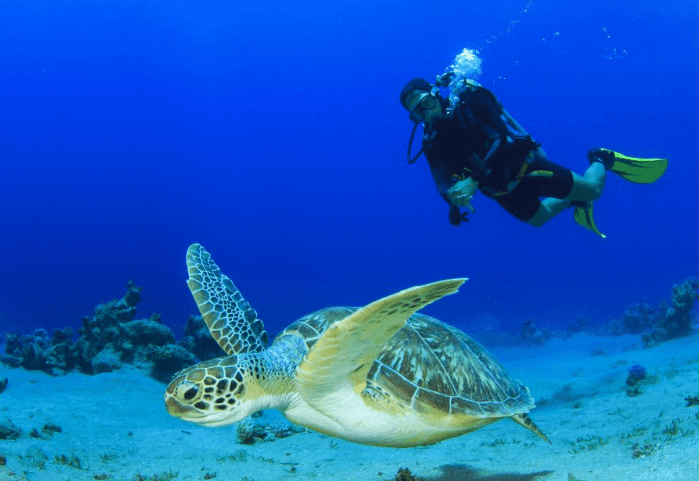
Oregon, nestled amid the rocky Pacific Northwest coastline, provides scuba diving experiences as compelling as its terrestrial surroundings. While not as well-known as other tropical locales, Oregon’s undersea environment has its own distinct beauty, with kelp forests, interesting rock formations, and a diverse range of marine life that thrives in its frigid waters. Oregon’s scuba diving landscape offers a gratifying and fascinating experience for divers looking for something off the main road, with everything from lively marine habitats to intriguing undersea geological features.
Key Dive Locations:
Yaquina Bay State Park: located in Newport, has kelp forests, rocky reefs, and the opportunity to see marine species such as wolf eels, rockfish, and nudibranchs.
Redfish Rocks Marine Reserve: This marine reserve at Port Orford is home to a rich array of marine animals, including lingcod, cabezon, and a range of colourful crustaceans.
Hood Canal Bridge: Located in Washington but accessible from Oregon, this attraction provides a fascinating underwater structure to investigate, with the possibility of seeing octopuses and other sea critters.
Attractions:
Kelp Forests: The kelp forests of Oregon offer an enthralling underwater scene, with swaying fronds and a diversity of marine life finding refuge inside.
While not as warm as some dive locations, Oregon’s waters are home to unusual marine animals that have adapted to the lower temperatures, such as enormous Pacific octopuses and colourful nudibranchs.
Dive locations frequently have interesting rock formations, underwater arches, and fissures that contribute to the experience.
6- Washington Scuba Diving:
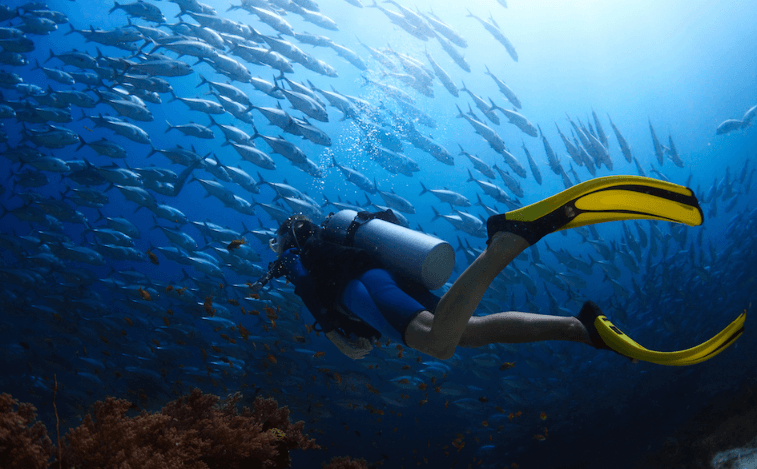
Washington, located in the Pacific Northwest, provides a scuba diving experience unlike any other. While its chilly waters contrast with tropical paradises, they are home to an enthralling underwater world full of unusual marine life, diversified ecosystems, and interesting geological structures. Washington’s scuba diving scene provides adventure, discovery, and a profound connection to the Pacific Ocean’s natural beauties, from exploring kelp forests to unearthing hidden gems in sunken wrecks.
Key Dive Locations:
Puget Sound: This complicated network of fjords, channels, and bays provides a range of diving sites with kelp forests, colourful marine life, and the chance to see enormous Pacific octopuses.
Hood Canal: Known for its pristine waters, Hood Canal is home to underwater cliffs, walls, and an abundance of marine life, including several rockfish species.
The San Juan Islands provide a variety of diving opportunities, from exploring underwater kelp forests to the possibility of seeing orcas and seals.
Attractions:
Kelp Forests: The kelp forests of Washington provide a unique underwater home for marine organisms ranging from little fish to bigger species such as seals.
Marine Diversity: Washington’s chilly waters sustain a diverse range of marine life, including anemones, sea stars, wolf eels, and the rare six-gill shark.
Wreck Diving: Divers can explore sunken ships, including historic wrecks and manmade reefs, to learn about nautical history.
7- North Carolina Scuba Diving
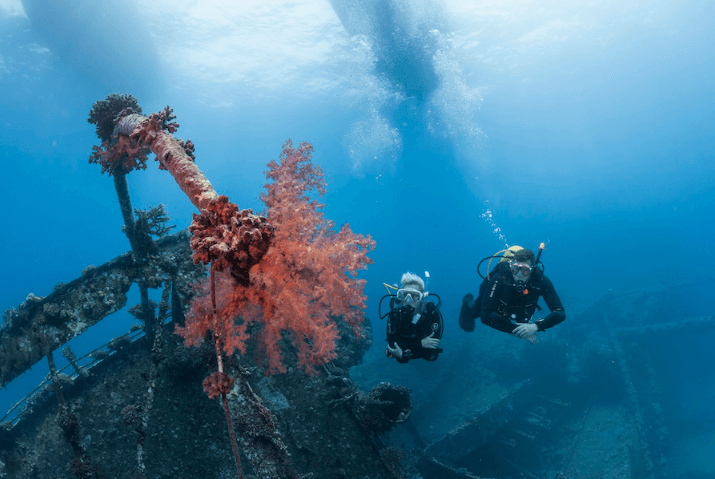
Scuba diving in North Carolina blends a strong maritime heritage with abundant marine species. North Carolina’s dive sites promise to take you into an underwater world where history and marine life collide, from the ruins of World War II boats to the thriving marine organisms that flourish in its waters. Whether you’re interested in shipwrecks or the region’s colourful marine life, North Carolina’s scuba diving scene encourages you to go on a voyage of discovery under the seas.
Key Dive Locations:
Off the Outer Banks, this region is famous for its numerous shipwrecks, notably the U-352 German U-boat and the USS Papoose.
Cape Fear: This region is home to a variety of shipwrecks and manmade reefs, providing chances to investigate marine life and nautical history.
Crystal Coast: The seas along the Crystal Coast are home to a variety of shipwrecks, making it a sanctuary for divers looking to explore these submerged time capsules.
Attractions:
Historic Shipwrecks: North Carolina’s seas are a graveyard for ships from many eras, giving divers an insight into the region’s nautical past.
Marine Biodiversity: From sand tiger sharks to barracudas, North Carolina’s rich marine life provides an exciting depth to its diving destinations.
Sunken ships and structures have been repurposed into artificial reefs, attracting marine life and providing unique diving opportunities.
8- New Mexico Scuba Diving

While New Mexico is better renowned for its desert vistas and historical attractions, you might be surprised to hear that this landlocked state has some of the most unusual and compelling scuba diving options. New Mexico’s diving environment is a hidden gem for anyone looking for adventure beneath the surface of its dry terrain, with underwater tunnels and spring-fed pools.
Key Dive Locations:
Blue Hole: The Blue Hole, located near Santa Rosa, is a natural artesian spring that generates a crystal-clear pool, providing a strange and pleasant diving experience.
Santa Rosa Lake State Park: This reservoir offers a tranquil diving experience with the opportunity to explore underwater rock formations and aquatic life.
Attractions:
Freshwater Diving: Freshwater diving spots in New Mexico offer a refreshing change from the traditional coastal setting, exhibiting the beauty of inland sources of water.
The Blue Hole is an excellent example of the state’s artesian springs, which provide steady, pure water for diving.
9- Michigan Scuba Diving
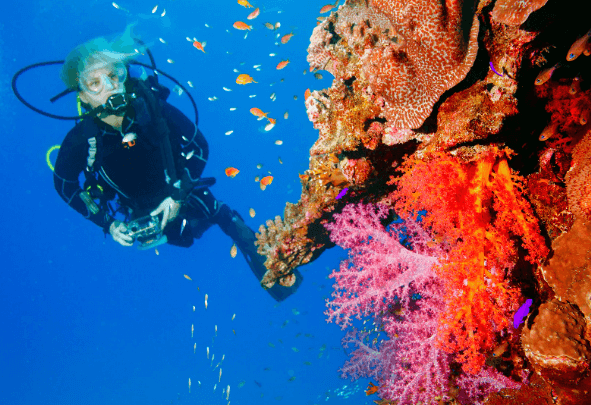
Michigan, nestled amid the Great Lakes, provides a scuba diving experience that is as varied as it is engaging. Michigan’s diving environment offers a unique combination of history, adventure, and natural beauty, with its huge freshwater bodies, shipwrecks, underwater caverns, and abundant marine life. Dive in Michigan’s waters for an underwater journey like no other, from discovering sunken vessels to meeting a variety of aquatic wildlife.
Key Dive Locations:
Thunder Bay National Marine Sanctuary: Located in Lake Huron, this sanctuary is a shipwreck treasure trove, allowing divers to examine antique boats preserved by the cold, freshwater environment.
Shipwrecks in Lake Superior: The cold and clear waters of Lake Superior have preserved several shipwrecks, including the “Eber Ward” and the “Monarch.”
Gilboa Quarry: This old limestone quarry near the Michigan border in Ohio offers an underwater playground complete with submerged artefacts, platforms, and clear waters.
Attractions:
Shipwrecks: The Great Lakes of Michigan are home to several shipwrecks that give a glimpse into nautical history as well as exciting underwater research.
Underwater caverns: Some dive locations allow you to explore underwater caverns, which adds a sense of adventure to your diving experience.
Marine Life: While not as rich as tropical seas, the Great Lakes nonetheless support a diverse range of fish and aquatic organisms.
10- New York Scuba diving

Beyond its renowned skyline and bustling city streets, New York State conceals a world of aquatic delights waiting to be discovered. New York provides a broad range of scuba diving adventures, from the depths of the Atlantic Ocean to the beautiful waters of freshwater lakes. Those who delve beneath the surface will find shipwrecks, artificial reefs, and marine life encounters, exhibiting the state’s rich nautical heritage and hidden aquatic beauty.
Key Dive Locations:
Long Island’s seas are home to various shipwrecks and diving sites, including the USS San Diego, a historic armoured cruiser destroyed during World War I.
Lake George: This freshwater lake has pristine waters and the opportunity to investigate sunken vessels, a model of the cruiser Bennington, and the underwater passages of the “Lost World.”
Thousand Islands: This region provides submerged cultural sites, well-preserved wrecks, and diverse marine life along the St. Lawrence River.
Attractions:
Shipwrecks: The waterways of New York harbour a plethora of shipwrecks that tell stories of nautical history and give interesting diving possibilities.
Inland lakes such as Lake George and the Finger Lakes provide unique freshwater diving experiences with pristine waters and historic artefacts.
Underwater trails and pathways: Some dive locations include underwater trails and paths that take divers through fascinating submerged environments.
11- New Jersey Scuba Diving

New Jersey has a diversified and thrilling scuba diving landscape that frequently astounds visitors who are unfamiliar with its underwater treasures. The waters of the Garden State offer a mesmerising playground for divers seeking adventure and discovery, with historic wrecks, artificial reefs, and rich marine life. Whether you’re an experienced diver or a novice, New Jersey’s dive spots offer an amazing adventure under the waters.
Key Dive Locations:
Shark River Reef: This man-made reef off the coast of Belmar is teeming with marine life and provides opportunity to see a variety of fish species, including the odd shark.
Barnegat Light: The seas near Barnegat Light are home to a number of shipwrecks, notably the famous “African Queen” wreck, which draws divers because of its history and marine life.
Sandy Hook: The historic USS Atlantus wreck off the coast of Sandy Hook is a fascinating diving destination with a special link to nautical history.
Attractions:
Shipwrecks: The shore of New Jersey is littered with shipwrecks ranging from old wooden vessels to modern steel ships, each with its own story to tell.
Artificial Reefs: The state’s dedication to building artificial reefs has resulted in thriving marine ecosystems and a broad range of undersea habitats.
Divers can see a variety of marine life, from colourful fish and crabs to lobsters and the odd bigger species such as sharks.
12- Pennsylvania Scuba Diving

Barnegat Light: The seas near Barnegat Light are home to a number of shipwrecks, notably the famous “African Queen” wreck, which draws divers because of its history and marine life.
Sandy Hook: The historic USS Atlantus wreck off the coast of Sandy Hook is a fascinating diving destination with a special link to nautical history.
Attractions:
Shipwrecks: The shore of New Jersey is littered with shipwrecks ranging from old wooden vessels to modern steel ships, each with its own story to tell.
Artificial Reefs: The state’s dedication to building artificial reefs has resulted in thriving marine ecosystems and a broad range of undersea habitats.
Divers can see a variety of marine life, from colourful fish and crabs to lobsters and the odd bigger species such as sharks.
13. Alaska Scuba Diving
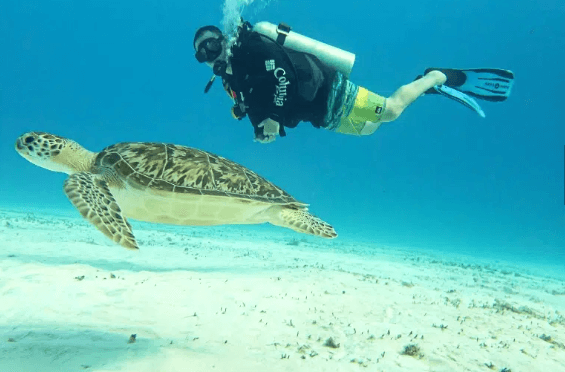
Alaska’s frigid seas and distant landscapes may not be the first spot that comes to mind when thinking about scuba diving, but this rough frontier provides a one-of-a-kind and unequalled underwater encounter. Alaska’s dive locations offer an experience as magnificent as its above-water splendour, from the rich marine life of its icy seas to the discovery of mystery wrecks. Alaska is a popular hunting spot for elks, moose and black bears. Discover the Last Frontier’s undersea world’s hidden riches and untamed charm.
Key Dive Locations:
Explore the chilly seas off the Kenai Peninsula, which are home to kelp forests, marine animals, and thriving marine ecosystems.
Tongass National Forest: Dive in the Tongass National Forest’s ancient underwater forests, surrounded by towering kelp trees and an assortment of marine species.
Wrangell Narrows: Navigate the Wrangell Narrows currents, where nutrient-rich waters attract a variety of marine species and provide great circumstances for underwater photography.
Attractions:
Marine Wildlife: Alaska’s waterways are rich with marine life, including sea otters, seals, sea lions, a variety of fish species, and the possibility of seeing orcas and humpback whales.
Kelp Forests: Underwater kelp forests offer a distinct underwater scenery while providing an enticing habitat for marine species.
Shipwrecks: Because Alaska’s history is entwined with nautical activities, there are interesting shipwrecks that provide insights into the past.
Tips for Scuba diving
Cold-Water Gear: Because of the cold water temperatures, proper exposure protection is needed. Thick wetsuits or drysuits are advised.
Dive Centres: Work with local dive centres to gain access to equipment, assistance, and important information about Alaska’s dive spots.
Wilderness Etiquette: Respect the pristine underwater ecosystems by avoiding interaction with marine life and protecting the underwater landscapes’ integrity.
Safety and preparation: Due to the isolated nature of diving locations, careful preparation, monitoring of weather conditions, and attention to safety regulations are required.
Scuba Diving FAQs
Is scuba diving popular in the United States?
Scuba diving is popular throughout the United States. Divers of all skill levels may enjoy a variety of diving options because to the country’s distinct coasts, freshwater lakes, and marine habitats.
Where are the top scuba diving spots in the United States?
Florida (with its coral reefs), California (with kelp forests), the Great Lakes (for wreck diving), Hawaii (for tropical marine life), and North Carolina (for shipwrecks) are among the greatest scuba diving destinations in the United States.
What kind of marine life can I expect to observe while scuba diving in the United States?
The aquatic life you meet will be determined by your location. Colourful tropical fish, sharks, turtles, and coral reefs may be seen in warmer locations. In cooler regions, you may come across kelp forests, marine creatures such as seals and sea lions, and a diversity of fish species.
Is a certification required to scuba dive in the United States?
Yes, most scuba diving locations in the United States demand at least an Open Water Diver certification. If you are not certified, dive companies frequently offer certification classes.
Are there any scuba diving rules in the United States?
Each state and diving location may have unique restrictions or requirements, therefore it’s critical to investigate and adhere to local legislation. Many dive locations, particularly marine protected areas, have environmental standards in place to safeguard the marine ecosystem.
Can a beginner scuba dive in the United States?
Yes, there are several dive locations in the United States that are suited for novices. Many dive shops provide introductory dives and training courses to assist new divers in getting started safely.
Are there any special diving opportunities in the United States?
Yes, diving in kelp forests in California, discovering shipwrecks in the Great Lakes, diving with sharks in Florida, and seeing marine life in Hawaii are all unique diving experiences in the United States.
What is the best time of year to go scuba diving in the USA?
The greatest time to go scuba diving in the United States varies depending on location. Diving is fun all year in warmer climates such as Florida and Hawaii. Diving is more popular in colder places during the summer months.
Are there any scuba diving conservation efforts?
Yes, many dive locations in the United States are protected areas or part of conservation efforts. Divers are advised to practise responsible diving to reduce their influence on marine ecosystems.


